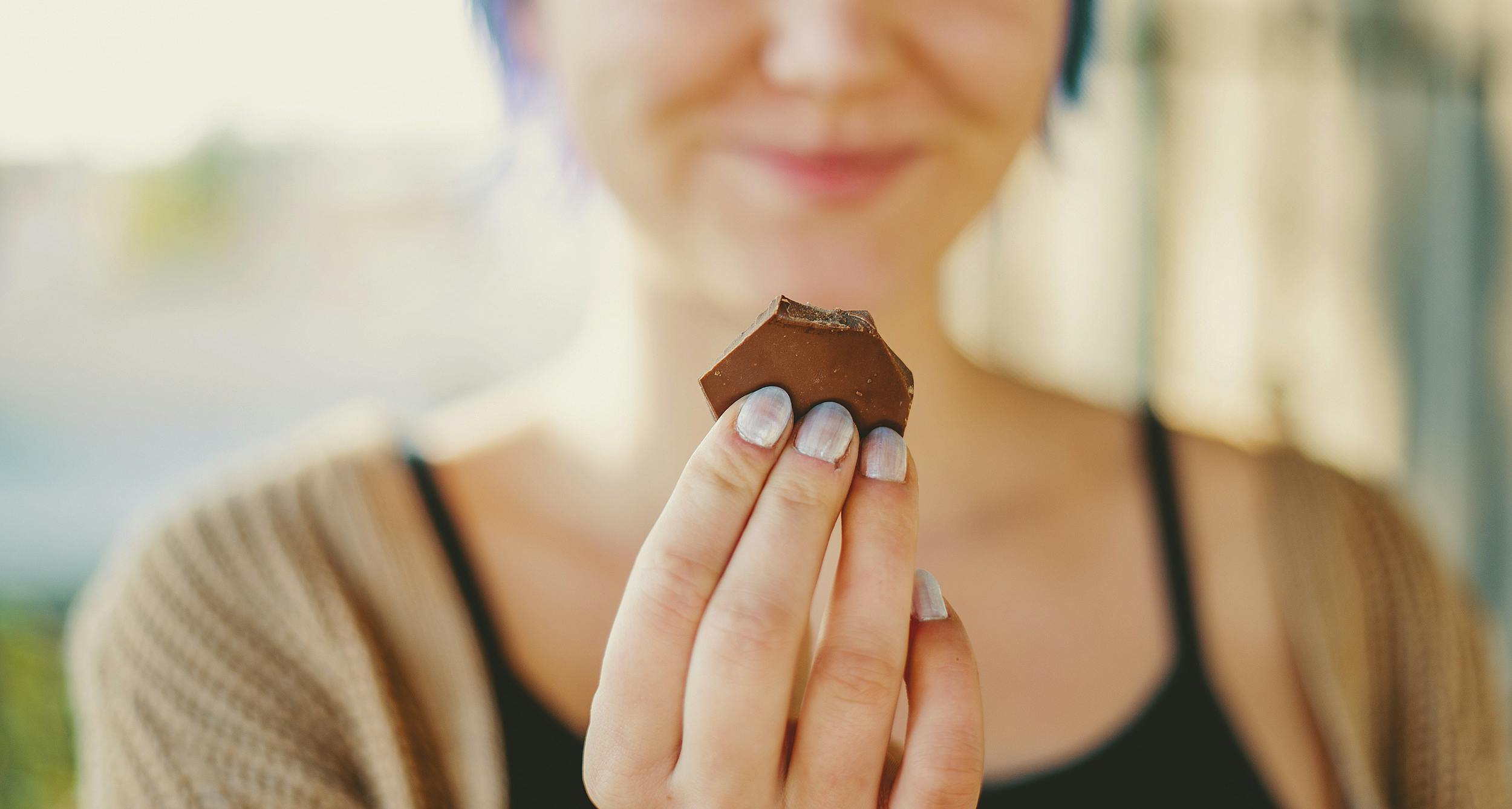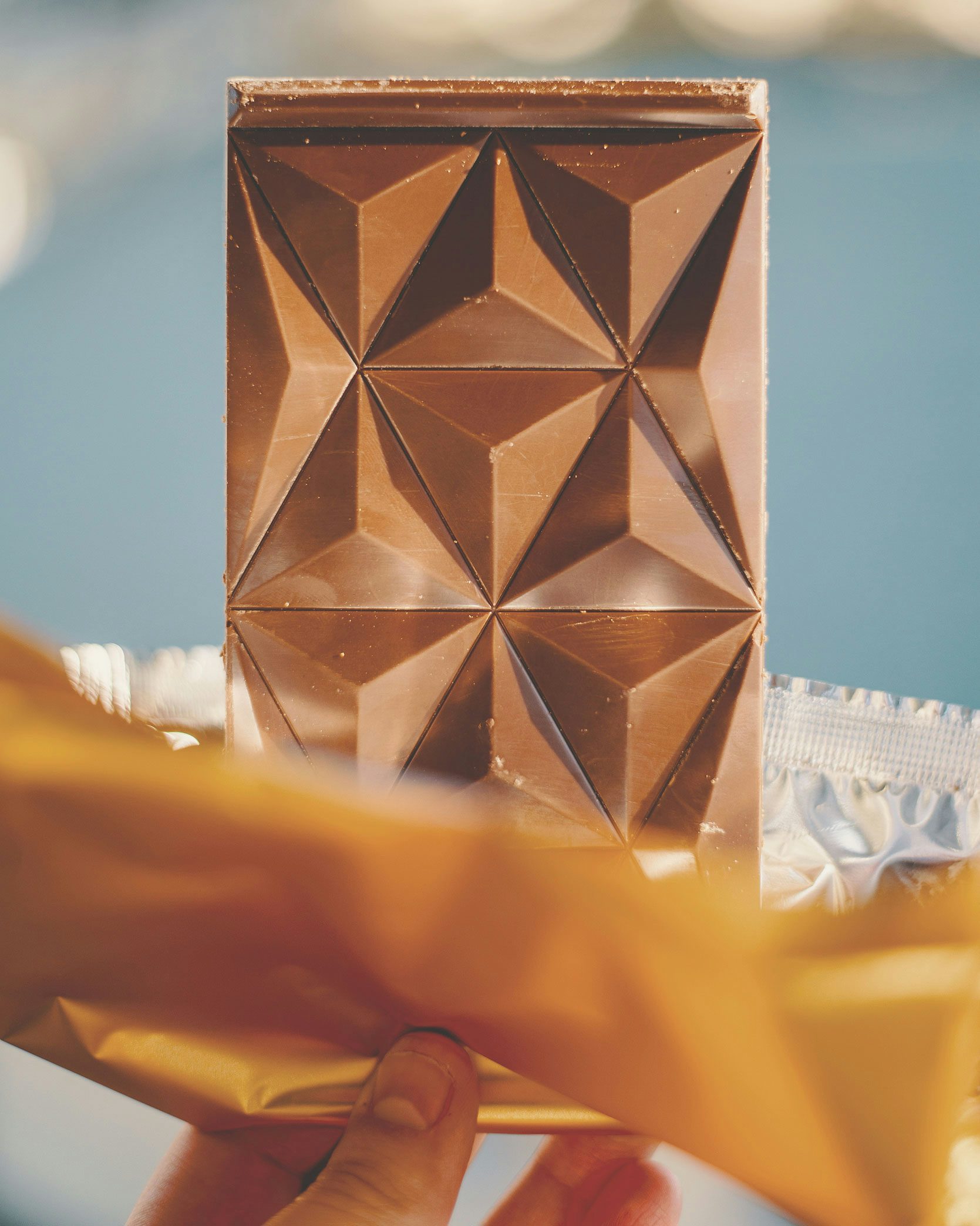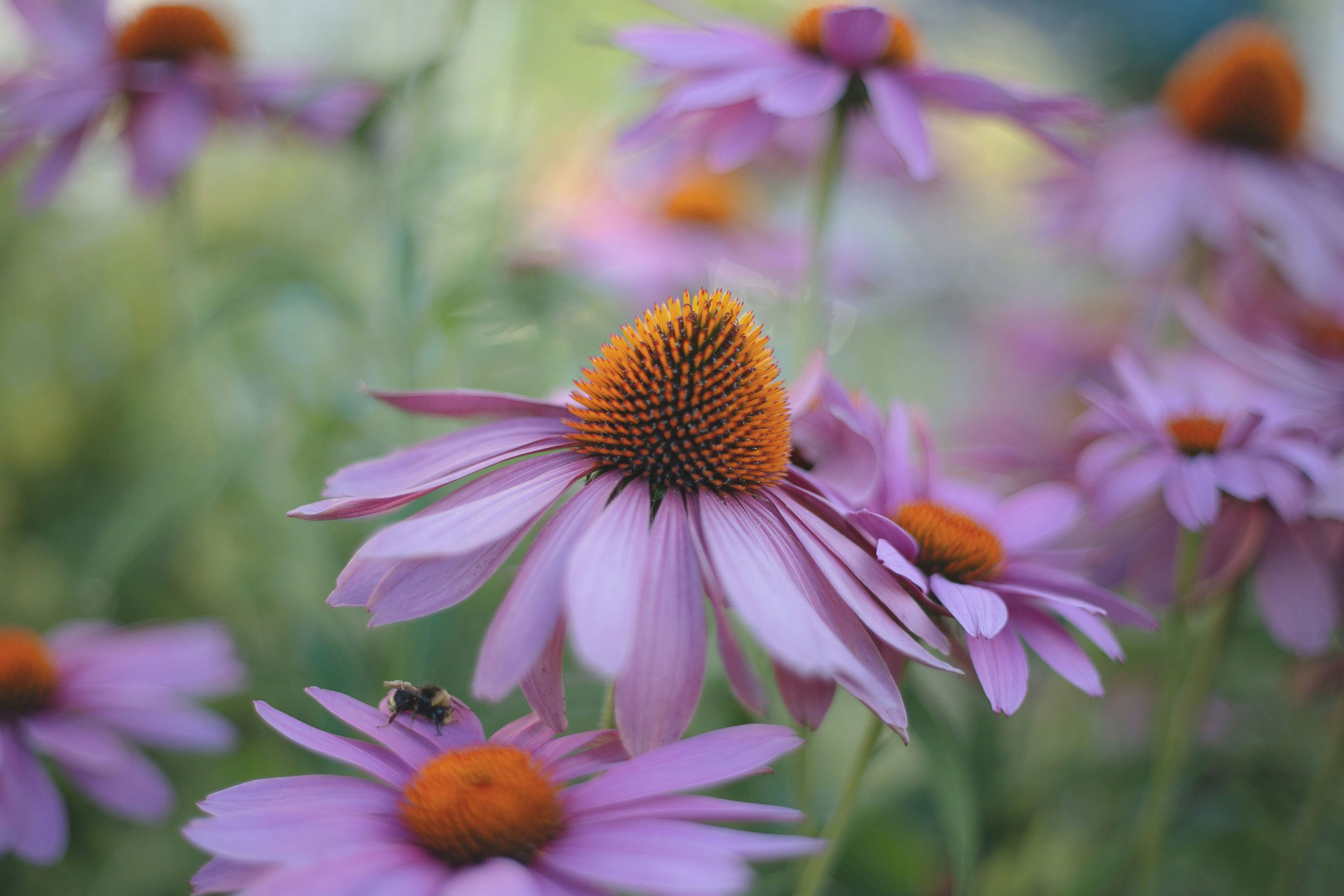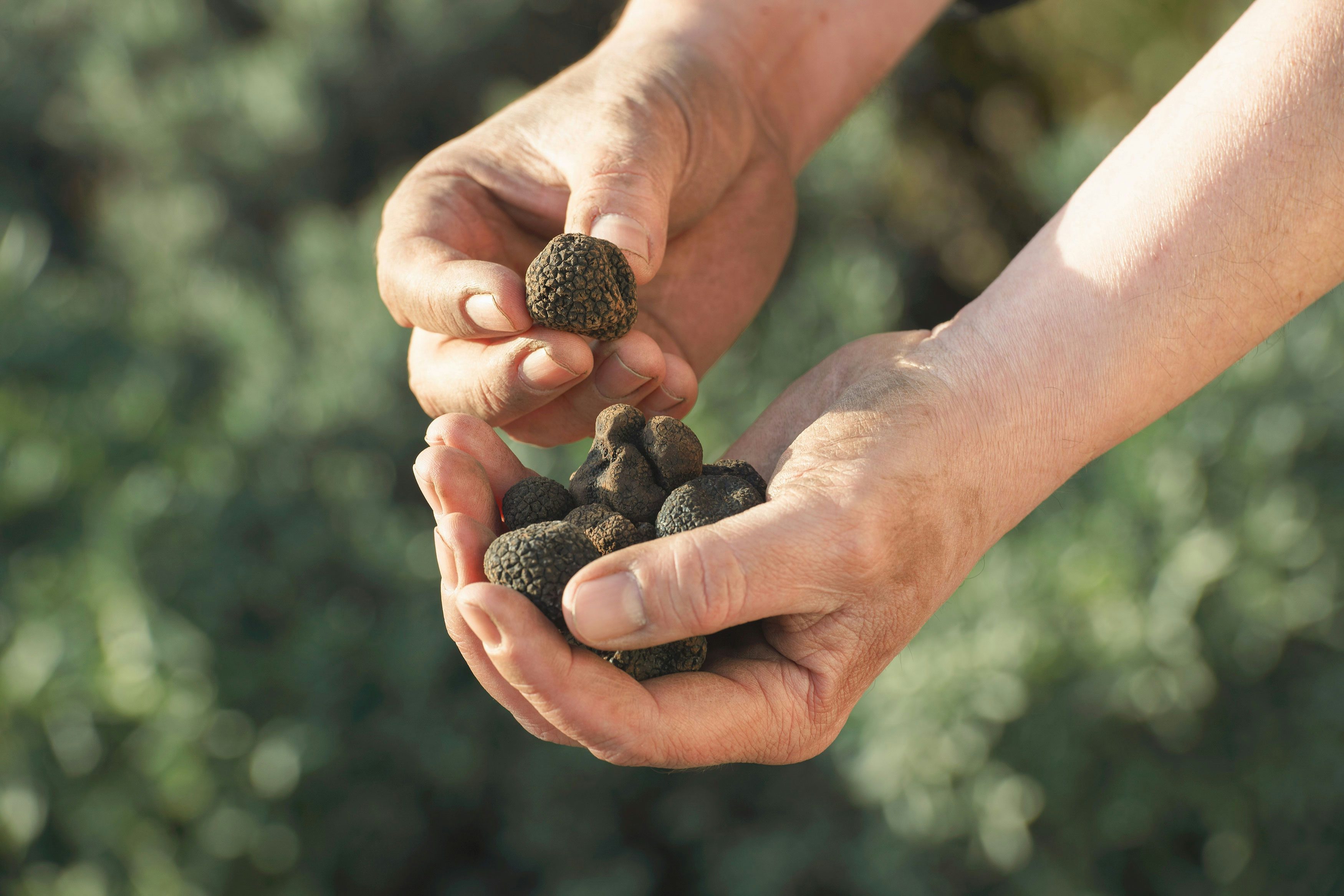
(Photography by Kaya Blaze Kelley for Herb)
Did You Know There Are Foods That Contain Cannabinoids?
Foods that contain cannabinoids can give a natural boost to your endocannabinoid system.
The 1960s was a time ripe with war, civil unrest, and social change across the globe. Yet, in the midst of the chaos, a team of Israeli scientists happened upon a discovery that would pave the way for a new generation of medicines. In the lab of Dr. Raphael Mecoulam at the Weizmann Institute of Science in Israel, researchers identified and isolated a unique molecule called tetrahydrocannabinol (THC) in 1964. THC is the compound in cannabis that causes the famous psychoactive “high.” It would take another three decades to discover exactly how THC works.
THC produces both intoxicating and medicinal effects thanks to its engagement with cells in the human body. Specifically, the compound interacts with specialized receptor sites that sit on a cell’s surface. These receptor sites respond to chemicals called cannabinoids, which were named after the cannabis plant. Until recently, researchers had very little knowledge regarding whether or not cannabinoids exist in other plants. Now, researchers have discovered that several common plants contain molecules that are cannabinoid-like in function. You may even be able to find some of them in your kitchen—echinacea, black pepper, and chocolate.
The chemicals in these plants are not exactly the same as those found in cannabis, yet they appear to have positive effects on the human endocannabinoid system. The endocannabinoid system (ECS) is the name for the network of cannabinoid receptors and corresponding cannabinoids that are naturally present in humans and other animals. When you consume cannabis, you experience intoxicating and medicinal effects of the herb thanks to the plant’s engagement with the endocannabinoid system. While researchers are still exploring just what exactly the ECS does in the human body, early research suggests that this system has many different functions, including regulation of sleep, appetite, immune function, mood, and pain.
Cannabis may be the only plant that produces THC, but emerging research suggests that common foods and other wild plants may also have an effect on the endocannabinoid system. While echinacea, black pepper, and chocolate are perhaps the most familiar, phytocannabinoid research is expanding. Lately, scientists have engineered yeasts (Pichia pastoris) that can produce the enzyme that creates tetrahydrocannabinol acid (THCA), the inactive form of psychoactive THC. But that’s not all. Here are the most common foods that contain cannabinoids. Or similar compounds, at least.
Chocolate

There is a pervasive myth amongst cannabis smokers that if you consume dark chocolate before toking up, it amplifies your high. There certainly aren’t any studies to test this theory, but the herbivores may be onto something. Chocolate contains compounds that interact with the endocannabinoid system. Similar to non-intoxicating CBD found in marijuana, chocolate contains compounds that interact with a particular enzyme in the body that boosts circulating levels of the body’s natural endocannabinoids. The term endocannabinoid refers to cannabinoid compounds that are produced naturally in the body.
This enzyme in question is called known as FAAH, and it is responsible for the breakdown of the endocannabinoid known as anandamide in our bodies. Anandamide is our natural version of THC. Compounds in chocolate appear to block this enzyme, increasing the amount of anandamide in the body. This makes us feel happy, relaxed, and generally good.
Further, in 1996, researchers from the Neurosciences Institute of San Diego found three separate compounds in chocolate that act as cannabinoids in the body, though it was unclear if this was through direct or indirect engagement with cannabinoid receptors. While chocolate is nowhere near the potent psychoactive that THC is, it has more of an impact on the brain and body than is often considered.
Black Pepper
Some marijuana strains, like Hash Plant, have a peppery taste and aroma. The reason for this? They contain high levels of a particular terpene called beta-caryophyllene (BCP). A terpene is an aroma molecule that’s found in plant essential oils. Unsurprisingly, this distinct flavor is also found heavily in black pepper.
Fairly recently it was discovered that BCP actually functions as a cannabinoid. Like many of the other plant compounds listed in this article, BCP has a binding affinity with the cannabinoid receptor 2 (CB2), which is most predominant in the immune system. Research has suggested that the anti-inflammatory compounds of this terpene may make it therapeutically valuable for treating conditions like arthritis and osteoporosis. Other research has indicated that BCP may increase the efficacy of anticancer drugs. However, these trials are preliminary and not conclusive.
Rosemary
Like black pepper, rosemary also contains beta-caryophyllene (BCP). Though, BCP is a terpene, some researchers now refer to the compound as a dietary cannabinoid. As mentioned above, BCP has quite a bit of therapeutic potential. Along with engaging CB2 receptors, early rodent research suggests that BCP may have antidepressant and anti-anxiety effects. When combined with cannabinoids like THC and CBD, the terpene is hypothesized to aid in addiction recovery and reduce pain.
Coneflower – Echinacea
The medicinal uses of Echinacea are well known and far-reaching. In homeopathic medicine, this plant is used to treat a little bit of everything–from fighting the common cold to relieving symptoms of anxiety, fatigue, arthritis, migraines, and other ailments. Funny thing, these are many of the same conditions that are potentially alleviated with medical marijuana.
Turns out, some species of echinacea contain compounds that engage the ECS sort of like cannabinoids. More specifically, they contain cannabimimetics. These herbal cannabimimetics are a bit different from those found in the marijuana plant, but they engage the endocannabinoid system nonetheless. These compounds are known as N-alkyl amides (NAAs).
The cannabimimetics in Echinacea interact with the CB2 receptor. This receptor is largely responsible for regulating the immune system and inflammatory response. In cannabis, psychoactive THC is the primary stimulator of the CB2 receptor. THC’s affinity with this particular receptor is partly why it is expected to be effective in treating inflammation-related symptoms. Oxeye plants (Heliopsis helianthoides) are also known to produce these types of cannabimimetics.

Kava
The Kava plant (Piper methysticum) has grown in popularity for its anti-anxiety and calming effects. Kava root has been used traditionally by Pacific island cultures who make a medicinal drink from the roots. The concoction is thought to provide sedative, pain relieving, and euphoric effects. These effects are primarily produced by compounds called kavalactones. One kavalactone in particular, called yangonin, appears to interact with the CB1 receptor. This is the same binding place for THC and is most predominant in the central nervous system. This interaction may be partly responsible for the intoxicating effects of the plant.
Hops
Back in 2018, a San Francisco-based hemp products company, Peak Health Foundation, claimed to have created a hop variety that successfully produces large amounts of the cannabinoid. CBD is a non-intoxicating cannabis compound popular for its stress-relieving and anti-anxiety potential. Until recently, the cannabinoid was only available through extractions of the cannabis plant. After some searching, however, scientists with Peak Health Foundation reportedly discovered a variety of southeast Asian hops that had naturally cross-pollinated with cannabis in Northern India.
This “discovery” is not without criticism since no scientific literature regarding cannabinoids in hops has been reported. This plant, however, did not produce large amounts of cannabinoids. To amp up cannabinoid production, researchers with Peak Health Foundation used either engineering or breeding techniques to create a plant that produced enough cannabinoids to be worthwhile for commercial use. But in the wild, this plant does no, produce these cannabinoids in meaningful amounts. The company patented and branded the engineered botanical, now dubbed Kriya™Brand Humulus and currently sell extracts of the concoction online.
Maca
Many of these plants contain compounds that directly engage cannabinoid receptors. Yet, other plants contain compounds that act like nonpsychoactive CBD. CBD has many functions in the body. One of these functions is blocking an enzyme that breaks down endocannabinoids (enzyme FAAH). As mentioned previously, endocannabinoids are the body’s own THC. Preventing the breakdown of endocannabinoids increases the amount of them in circulation throughout the body. This may cause a cascade of effects, including mood stabilization. Compounds in Maca (Lepidium meyenii), called N-benzylamines, appear to block FAAH activity. Hypothetically, this may improve endocannabinoid tone, boosting the system overall.
Black Truffles

There is a difference between cannabinoid compounds created by plants and those created by animals. Animals create endocannabinoids and while plants create phytocannabinoids. These chemicals are very similar to each other, but they have some important differences.
Much to the surprise of many, Italian researchers have found that black truffles create anandamide (AEA). AEA, also known as the bliss molecule, is the animal version of THC. This endocannabinoid is usually made by animals and binds to the CB1 receptor.
Funny thing, while these truffles don’t have cannabinoid receptors, they do produce AEA. So, the theory is that the mushrooms create the compound to attract animals that will eat them and spread around their spores. Looks like there is a good reason why these delicacies are smuggled around the world, after all.
Paracress
Also known as the toothache plant, the Amazon native can be made into a strong painkilling gel. Formal trials of this plant-based gel conducted by Cambridge University found that the plant was successful in blocking pain signals sent through nerve endings. The plant contains compounds known as N-Acylethanolamines, which act on the CB2 receptor. Amazingly, early scientific speculation suggests that these compounds may have anti-tumor potential, placing paracress in a long line of potent medicinal plants. While its cancer-fighting properties are a long way from clinical research, the natural analgesic is currently being considered as a new drug-of-choice for dentists working with painful ailments like impacted wisdom teeth.
Helichrysum umbraculigerum
This daisy indigenous to South Africa contains a compound strikingly similar to cannabigerol (CBG). CBG is the precursor molecule to THC, CBD, and other cannabinoids. Interestingly, there is some rumor regarding the traditional use of the particular kind of daisy. During a lecture at the annual meeting of the International Cannabinoid Research Society, Italian natural product chemist Giovanni Appendino reported that a helichrysum variety was used “like hemp, to make fumes in ritual ceremonies” in African pharmacology. He also suggested that compounds in the plant may have a “psychotropic effect… similar to cannabinoids.”
New Zealand Liverwort
There’s a new psychoactive in town and its name is perrottetinene. Instead of being found in a fungus or flower, this lightly intoxicating compound is found in a moss-like plant. The first studies on cannabinoid compounds in liverwort were published nearly three decades ago. Researchers identified a THC-like chemical produced by liverwort in both Japan (radula perrottetii) and New Zealand (radula marginata) called perrottetinene and perrottetinenic acid respectively.
Perrottetinene has a very similar structure to THC. Emerging research suggests that these compounds are cannabimimetic, meaning they engage the endocannabinoid system like the compounds in cannabis. The cannabimimetic compounds in liverwort engage the CB1 receptor, like THC. Also like THC, it’s hypothesized that this compound produces a mild psychoactive effect. While it’s intoxicating potential is expected to be lower than that of THC, early research suggests that the molecule may be a more potent anti-inflammatory. Specifically, scientists hypothesized in 2018 that this cannabinoid-like compound may be especially pertinent to brain inflammation.
Herb Recommended Products:
READ MORE










